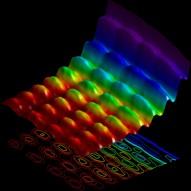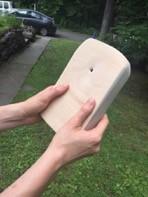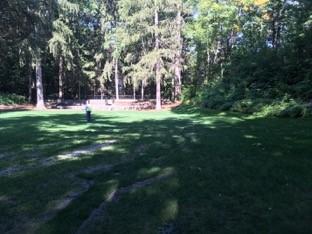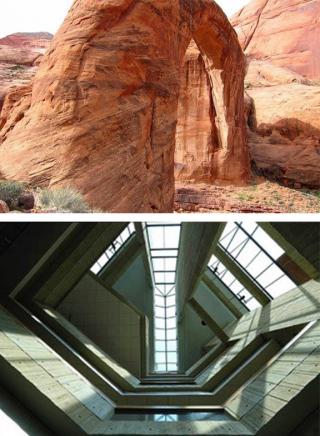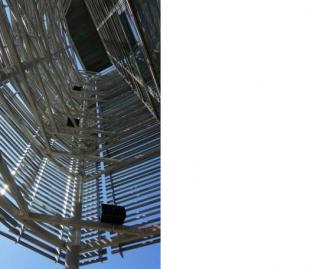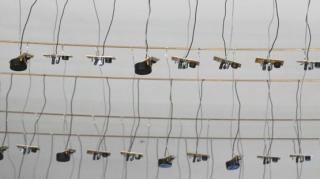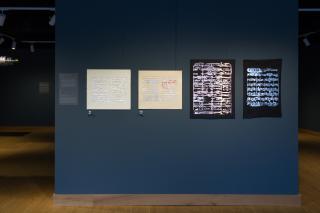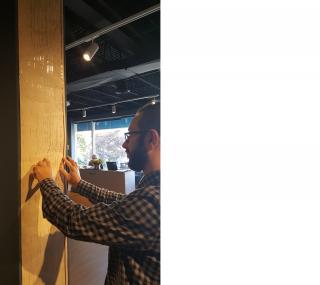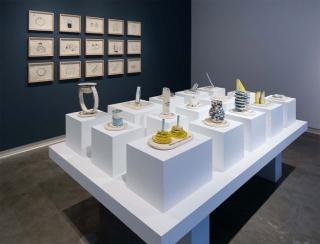Notes
[1] Douglas Kahn, “Sound Art, Art, Music,” special issue on Sound Art, ed. Ben Basan, The Iowa Review Web 8, no. 1 (February/March 2006).
[2] Christoph Cox, “Sound Art and the Sonic Unconscious,” Organised Sound 14.1 (2009): 19–26.
[3] For more on this process, see the discussion headed “Site Selection” in Amelia Kahl’s essay in this volume, “A Space for Sound: Curating a Sound Art Exhibition on a College Campus.”
[4] Robin Clark, “Phenomenal: An Introduction,” in Phenomenal: California Light, Space, Surface ed. Robin Clark (Berkeley: University of California Press, 2011), 20.
[5] Originally the Sonic Arts Group, the name was later changed to the Sonic Arts Union. I discuss the relationship between Fluxus and sound art in the brochure essay “Sound and the Sonic Imagination,” in Resonant Spaces: Sound Art at Dartmouth, Amelia Kahl and Spencer Topel (Hanover, NH: Hood Museum of Art, 2017), 3–7.
[6] Daniel McDermon, “How Much Silence Is Too Much? I Found Out,” New York Times, April 7, 2017, www.nytimes.com/2017/04/07/arts/design/guggenheim-museum-doug-wheeler-synthetic-desert.html.
[7] Kyle Gann, No Such Thing as Silence: John Cage’s 4’33 (New Haven: Yale University Press, 2010).
[8] Christoph Cox, “Sound Art and the Sonic Unconscious,” Organised Sound 14.1 (2009): 19–26.
[9] Phantom tones, or difference tones, are created via a process called heterodyning. Further information can be found at No Ideas but in Things: The Composer Alvin Lucier, www.alvin-lucier-film.com/bird.html, the website for the film of the same name directed by Viola Rusche and Hauke Harder, Filmwerkstatt Kiel Der Filmförderung Hamburg Schleswig-Holstein GmbH, 2013.
[10] Cathy Van Eck, Between Air and Electricity: Microphones and Loudspeakers as Musical Instruments (New York: Bloomsbury Publishing USA, 2017).
[11] Julianne Swartz, private conversation with the author following the Resonant Spaces symposium at Dartmouth College on September 23, 2017.
[12] For a transcription of the complete didactic text, see Laura Graveline, “Transfer (objects) by Julianne Swartz,” Library Muse blog, Dartmouth Library, September 27, 2017, sites.dartmouth.edu/library/2017/09/27/transfer-objects-by-julianne-swartz/.
[13] For this concept, see Emma Barratt and Nick Davis. “Autonomous Sensory Meridian Response (ASMR): a flow-like mental state.” PeerJ 3 (2015): e851.
[14] Jacob Kirkegaard, “Resonant Spaces: Sound Art at Dartmouth” symposium, Dartmouth College, September 23, 2017.
[15] Pierre Schaeffer et al., Solfège de l’objet sonore, audio recording, 1967; reissued on compact disc, Paris: INA/GRM, 2008.
[16] Interestingly, this slatted metal structure was built for the purpose of blocking light pollution from the Life Science Building’s front stairwells that would be visible from the adjacent residential neighborhood.
[17] Jess Rowland, “Flexible Audio for Composition and Art Practice,” special issue on Sound Art, Leonardo Music Journal, no. 23 (2013): 33–36.
[18] Petra Stoerig, “Varieties of Vision: From Blind Responses to Conscious Recognition,” Trends in Neurosciences 19, no. 9 (1996): 401–6.
[19] Brian Eno, “Ambient Music,” in Audio Culture. Readings in Modern Music (London: Continuum, 2004).


